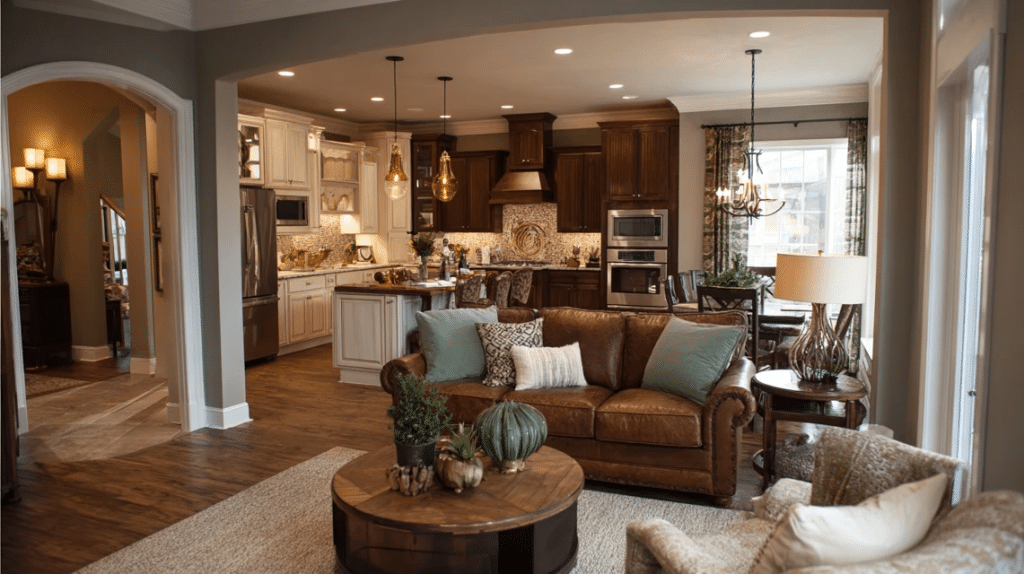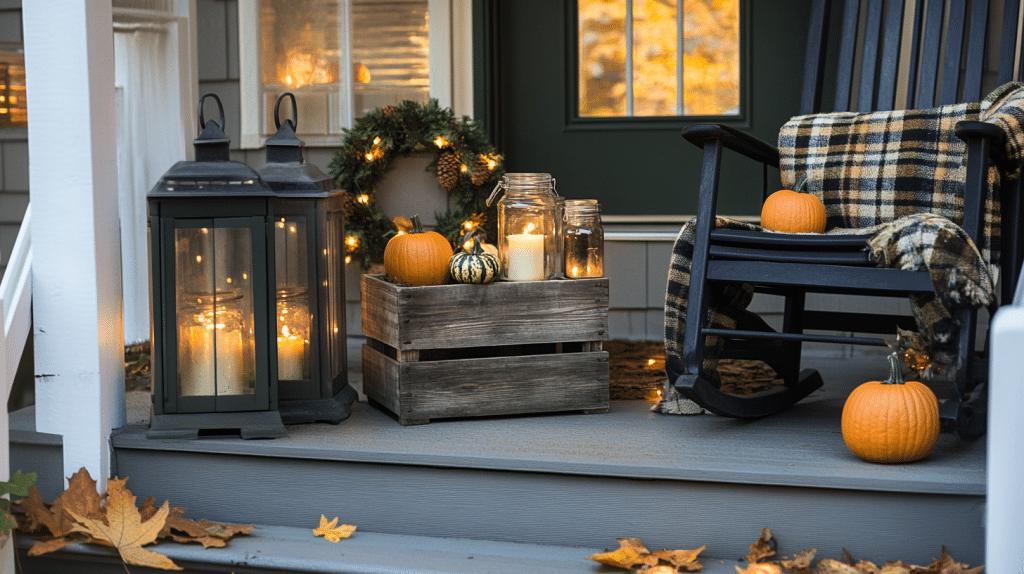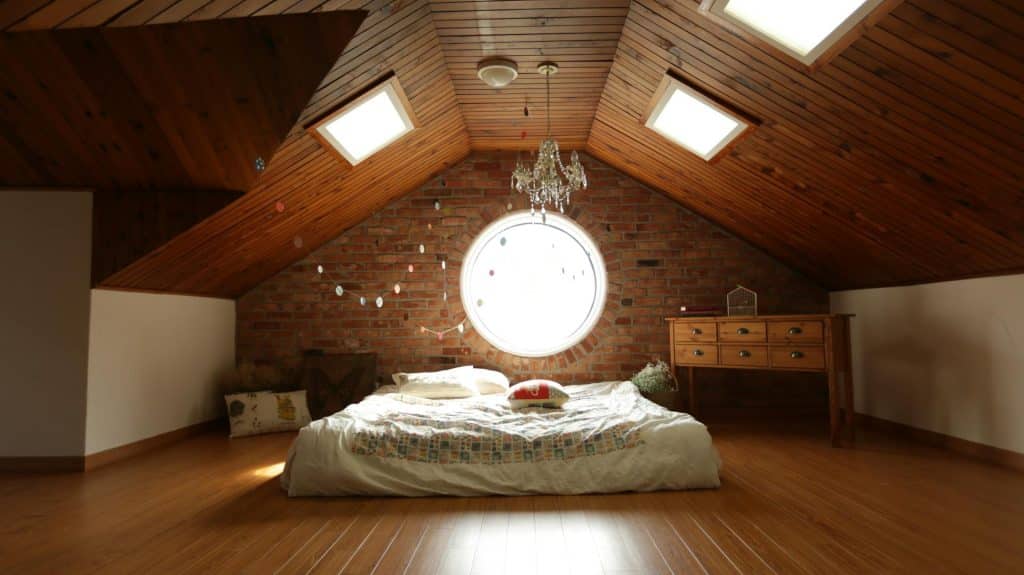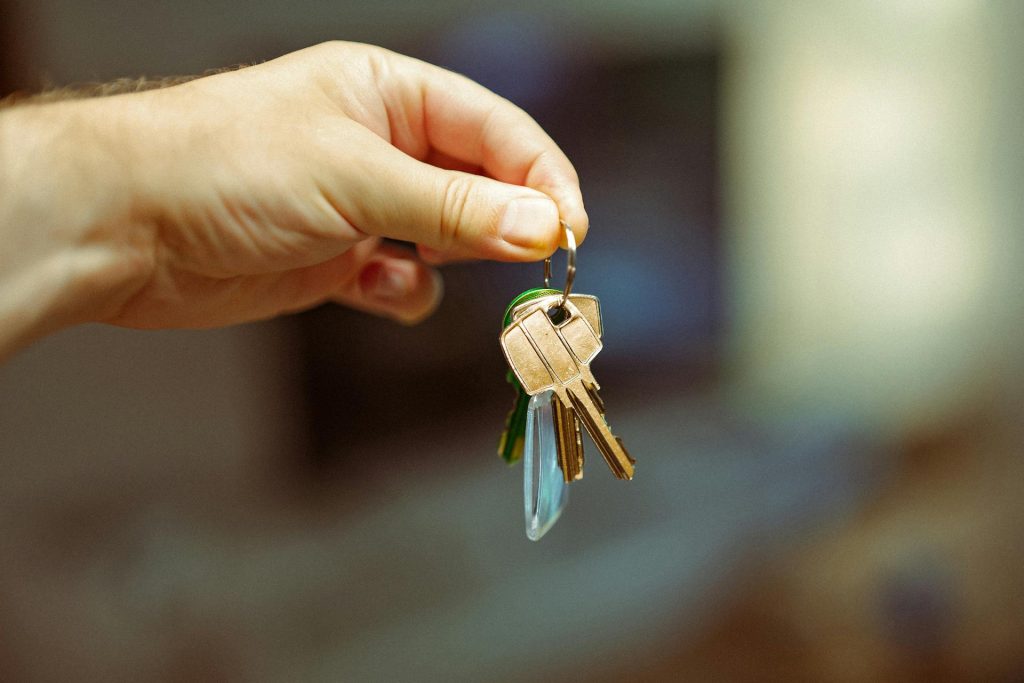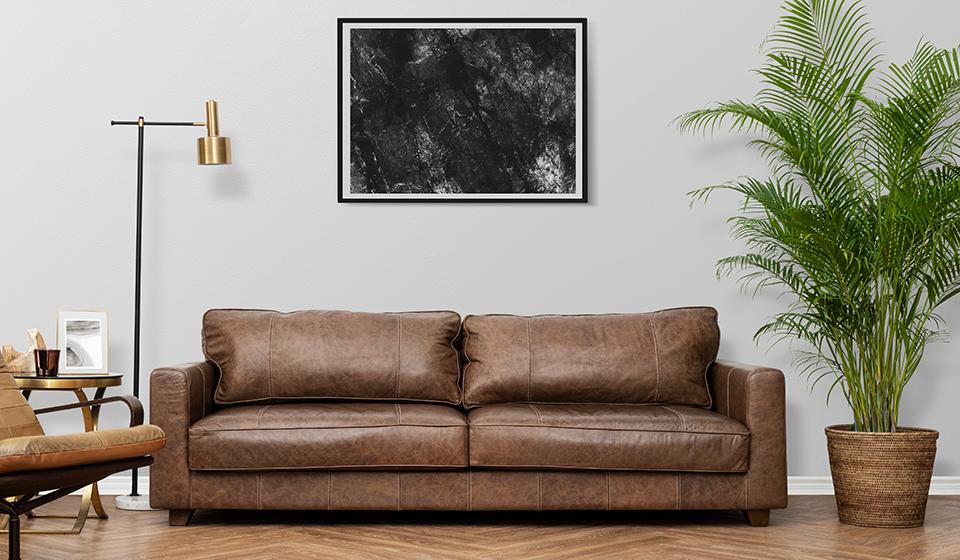I’ll never forget walking into that design center for the first time, feeling like a kid in a candy store.
Everything looked so shiny and perfect, and the sales rep was incredibly convincing about all these “must-have” upgrades that would supposedly make my new home amazing.
Fast forward two years, and I’m kicking myself for some of the choices I made. Don’t get me wrong, some upgrades are totally worth it.
After going through the new home building process twice and talking to countless other homeowners, I’ve learned which design center upgrades you should skip and which ones actually add value.
Let me save you from making the same expensive mistakes I did by telling you what design center upgrades to avoid.
Design Center Upgrades to Avoid
When I started designing my space, I quickly realized how easy it is to make inevitable mistakes that can hinder the overall look and function of my home.
By knowing about these design center upgrades to avoid, I was able to create a space that truly works for me and my needs.
1. Overly Trendy Features
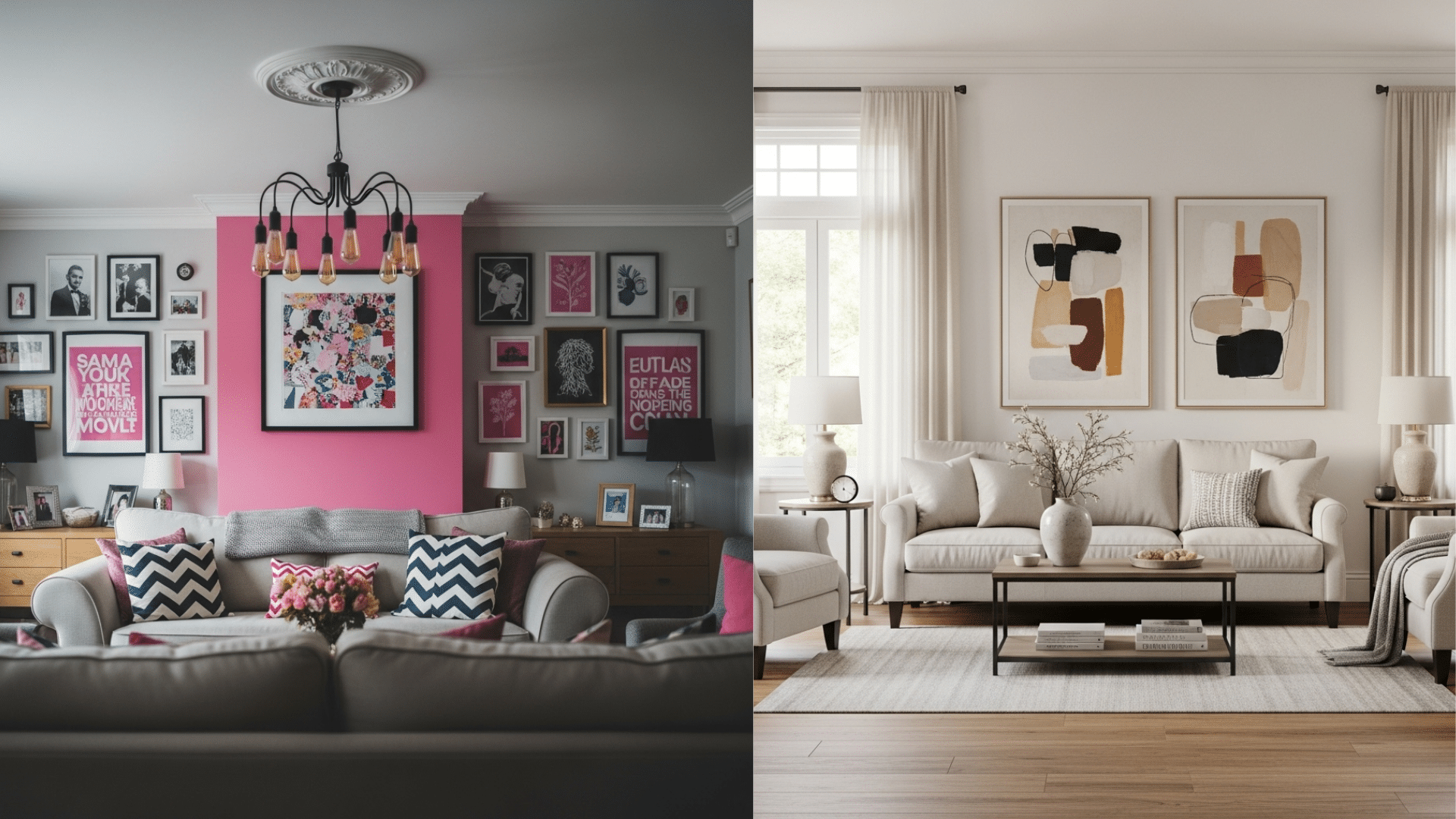
- Why avoid it: Trends come and go, leaving you with outdated designs that may not suit your long-term preferences. What’s in vogue today might be out of style tomorrow, leading to a space that no longer feels fresh or relevant.
- Alternatives: Stick with timeless, versatile styles that can be easily updated with small decor changes. Classic furniture, neutral tones, and durable materials often prove to be a reliable choice for the long haul.
- Tips: Opt for classic designs for major items like furniture and finishes, and incorporate trendy elements through smaller accessories or accent pieces. This way, your space remains stylish without feeling outdated in a few years.
2. Excessive Customization
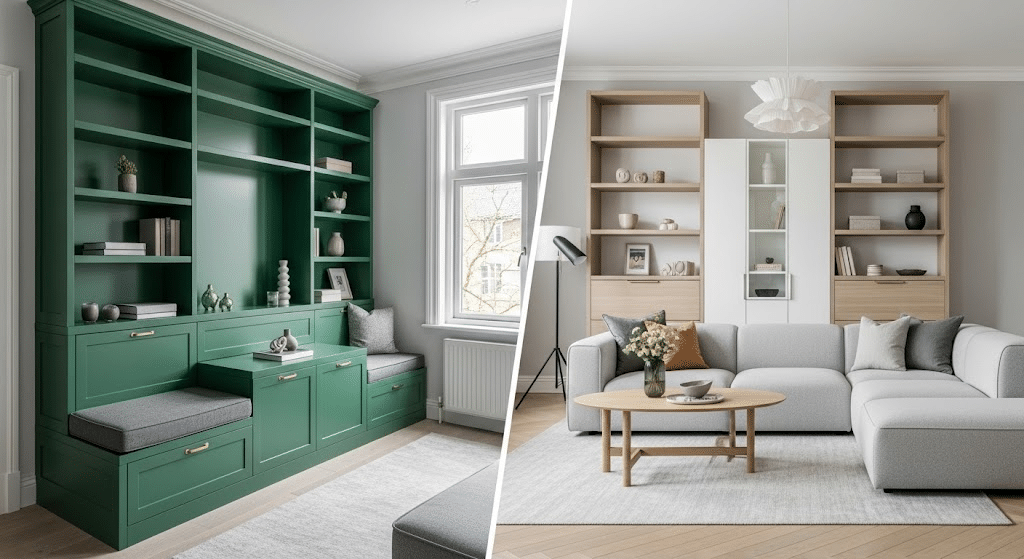
- Why avoid it: Over-customizing can make your home feel overly personalized in a way that might not age well. The risk is that specific designs or choices may lose their charm as trends evolve.
- Alternatives: Focus on creating a balanced mix of personal style and adaptable elements. Classic pieces, neutral colors, and functional layouts allow for easy updates over time without sacrificing your individuality.
- Tips: Keep major design elements like furniture and wall colors more neutral or timeless. Use custom touches sparingly in smaller, more flexible items like accessories, artwork, or textiles.
3. Ignoring Functionality
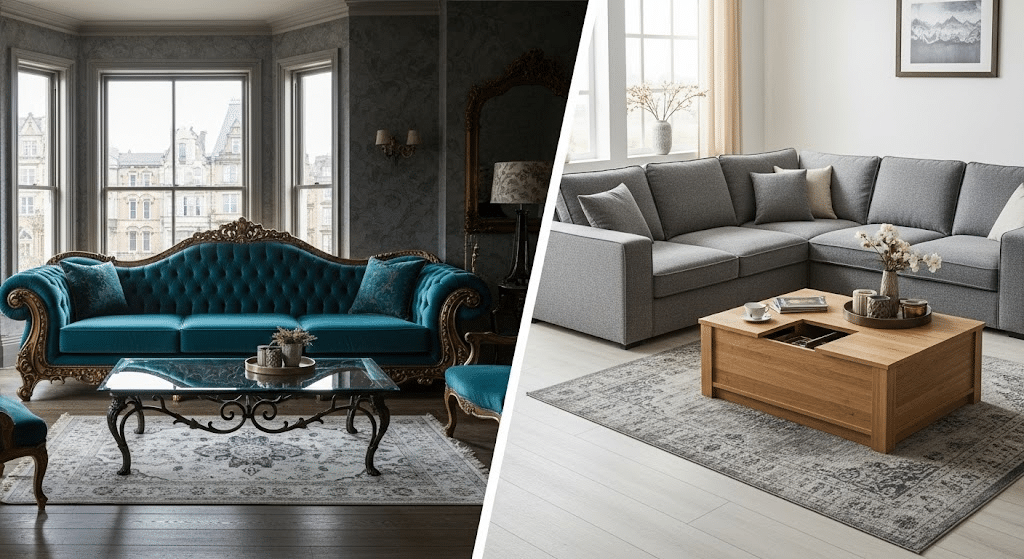
- Why avoid it: A beautiful but impractical design can lead to frustration, especially if it affects how you use the space. For example, a gorgeous couch might not fit well in your living room, or a fancy coffee table might make it hard to access your seating area.
- Alternatives: Prioritize multifunctional furniture and spaces that serve more than one purpose, such as a couch that converts into a bed or a dining table with hidden storage.
- Tips: Make sure your design solutions bring comfort, ease of use, and convenience. Always consider how the space will be utilized on a day-to-day basis and plan for practical needs, such as storage, seating, and movement.
4. Neglecting Lighting Plans
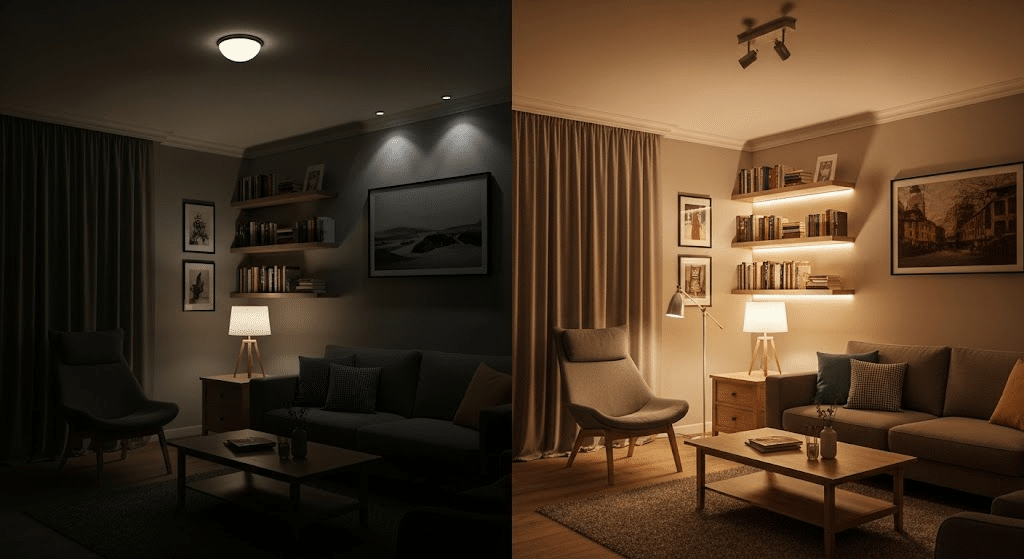
- Why avoid it: Poor lighting can make a space feel uninviting or hard to find. Inadequate lighting can create dark spots or make it difficult to see in key areas, such as workspaces or kitchens.
- Alternatives: Layer your lighting with ambient, task, and accent options to create a balanced atmosphere. Consider using adjustable lighting, such as dimmable switches, to accommodate different moods and activities.
- Tips: Always have sufficient lighting for reading, cooking, and work areas. Dimmable switches enable you to adjust the brightness as needed, and a combination of overhead and task lighting ensures every area is well-lit and inviting.
5. Too Many Statement Pieces
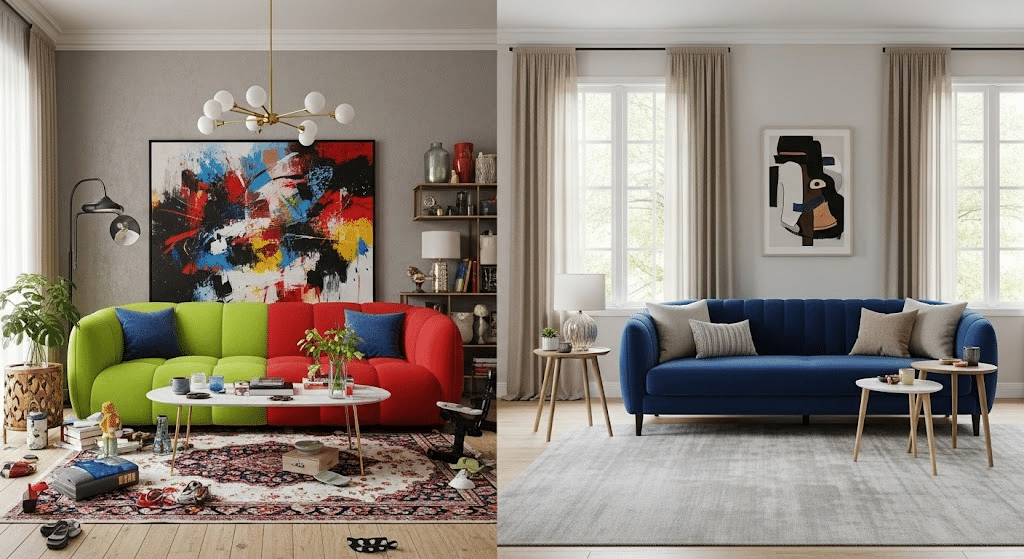
- Why avoid it: An overabundance of bold furniture or decor can make the room feel cluttered and chaotic. When everything competes for attention, the space loses sync and balance.
- Alternatives: Select one or two statement pieces and balance them with more neutral items. For example, a standout couch or art piece can be complemented by neutral rugs, curtains, or side tables.
- Tips: Use accent walls or feature furniture sparingly to create focal points without overpowering the room. This way, your bold pieces remain impactful while maintaining a calm, balanced atmosphere.
6. Incorporating Too Much Open Shelving
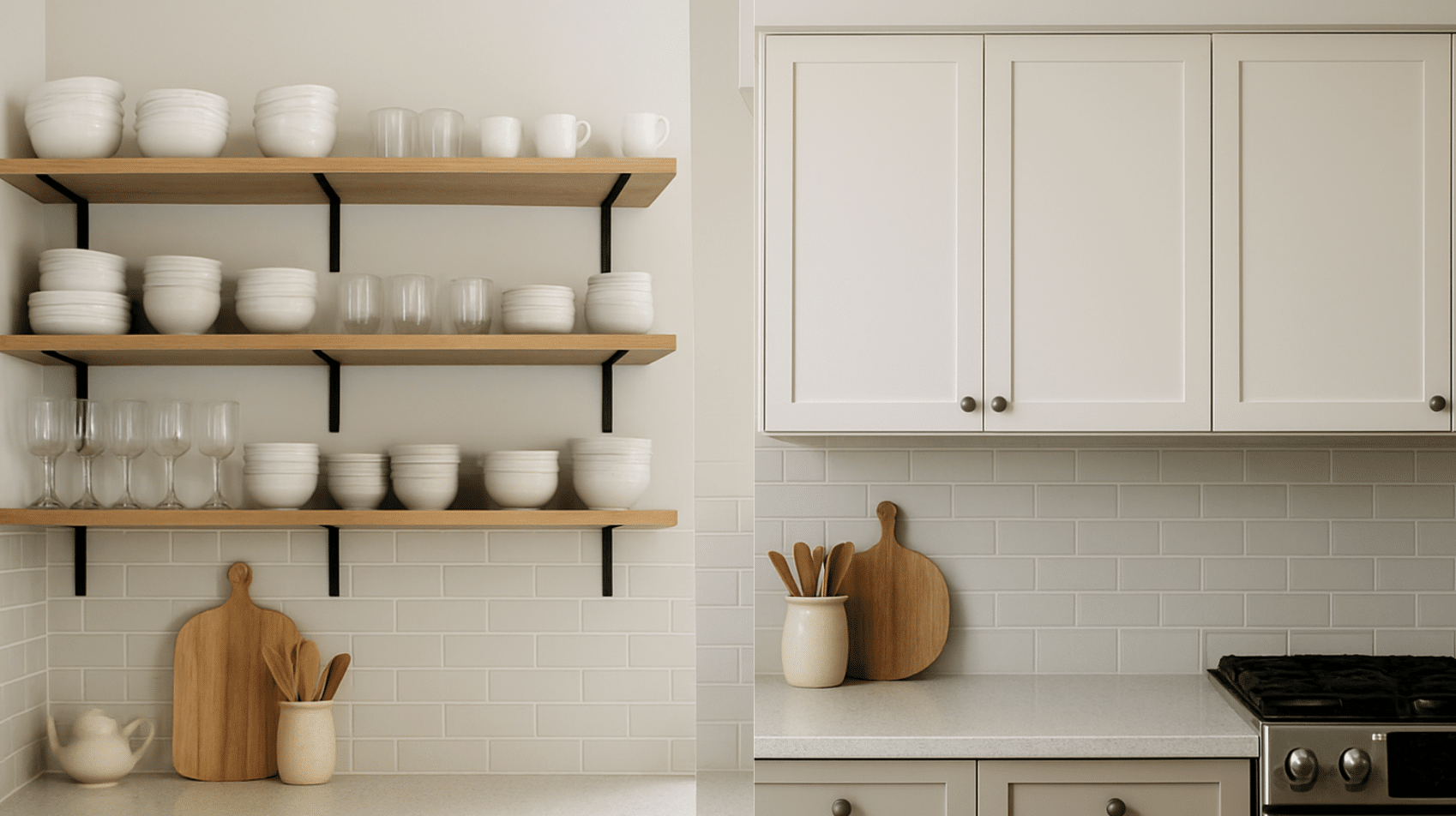
- Why avoid it: Open shelves require constant organization and maintenance, and they can quickly become messy. Items on display must be neatly arranged to avoid making the space look chaotic.
- Alternatives: Opt for closed cabinets or sleek storage solutions that hide items. Shelving with doors can still display decorative pieces while hiding away clutter.
- Tips: If you choose open shelving, limit it to areas where items are used frequently and can be organized neatly. Consider adding baskets or boxes for a more organized look.
7. Forgetting About Maintenance
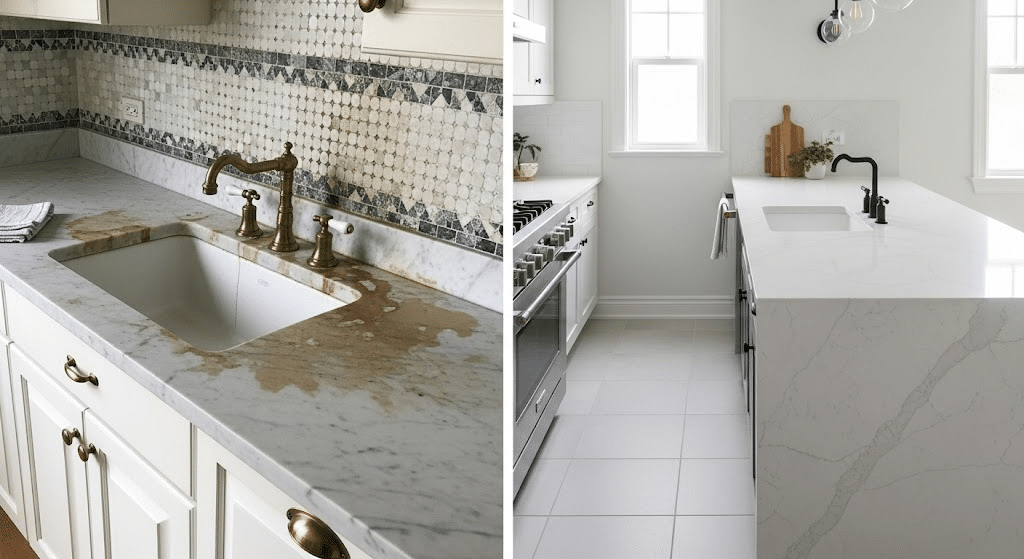
- Why avoid it: High-maintenance materials or designs will require frequent upkeep, leading to frustration and additional costs. Over time, you may find yourself constantly cleaning, repairing, or replacing items that weren’t practical in the long run.
- Alternatives: Opt for low-maintenance materials, such as quartz countertops, vinyl flooring, and synthetic fabrics, which are easy to clean.
- Tips: Consider the long-term care requirements for any materials you choose. Avoid complex designs that need constant attention, and always look for surfaces and materials that require minimal upkeep.
8. Excessive Use of Glass
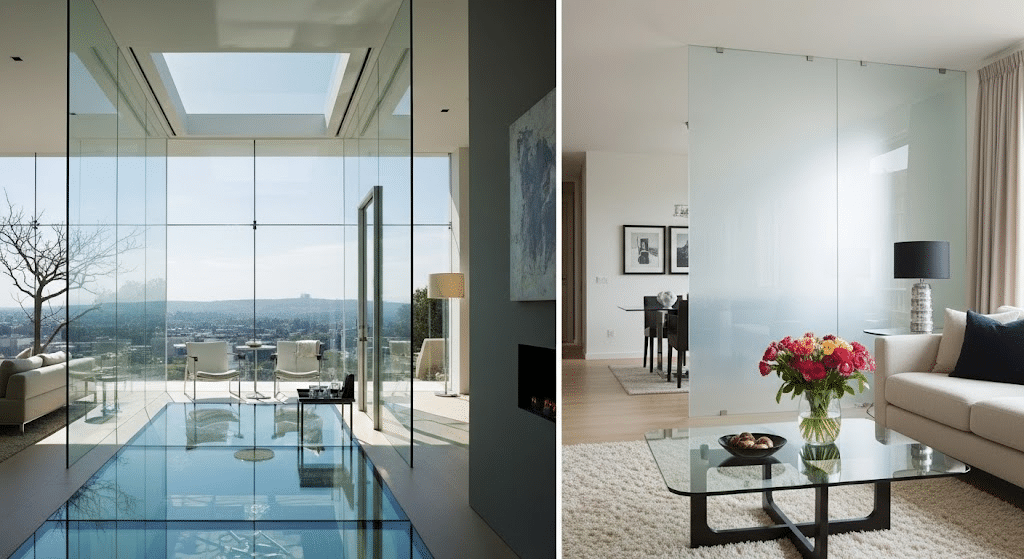
- Why avoid it: Overuse of glass, especially on large surfaces or low-to-the-ground areas, can create safety hazards and reduce privacy. Clear glass doors, railings, and windows can leave the room vulnerable to exposure.
- Alternatives: Incorporate glass as an accent, using it in moderation. Consider using frosted or textured glass to improve privacy while still allowing light to pass through.
- Tips: Ensure that glass elements are securely installed and won’t pose a danger, particularly in households with young children or pets. Also, consider using glass in smaller amounts, such as glass tables or vases, to prevent the space from feeling too exposed.
9. Going Overboard with Smart Features
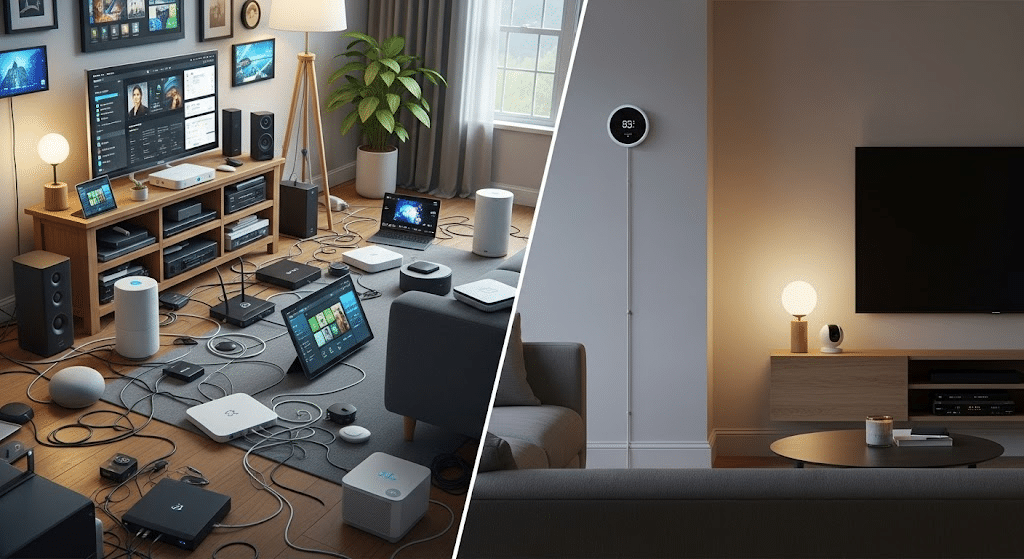
- Why avoid it: Overloading your home with gadgets can create unnecessary complexity and make your space feel cluttered. The more devices you incorporate, the more challenging it becomes to keep everything synced and functioning smoothly.
- Alternatives: Focus on essential smart devices, such as thermostats, lighting, or security systems, that increase convenience without excessive complexity.
- Tips: Invest in products that integrate well with each other and can be easily controlled from a single platform. Prioritize functionality over novelty, ensuring that smart features add value to your home without overwhelming it.
10. Choosing Bold Colors for Every Wall
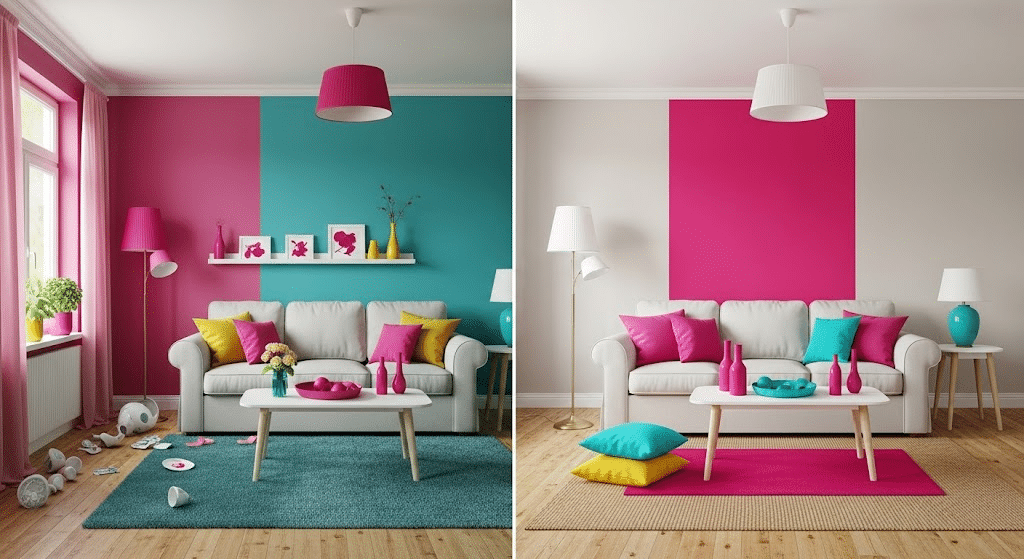
- Why avoid it: Using bright or dark colors on all walls can overwhelm the space, making it feel cramped or intense. Bold hues, while dramatic, can sometimes clash if not carefully balanced.
- Alternatives: Use bold colors for accent walls or in smaller, well-defined areas, such as niches and corners. This allows the color to stand out without overpowering the room.
- Tips: Use lighter or neutral tones for the majority of the space to allow bold colors to stand out without overwhelming the space. You can always introduce bold accessories, such as pillows, rugs, or artwork, to complement the bold wall.
11. Ignoring Scale and Proportion
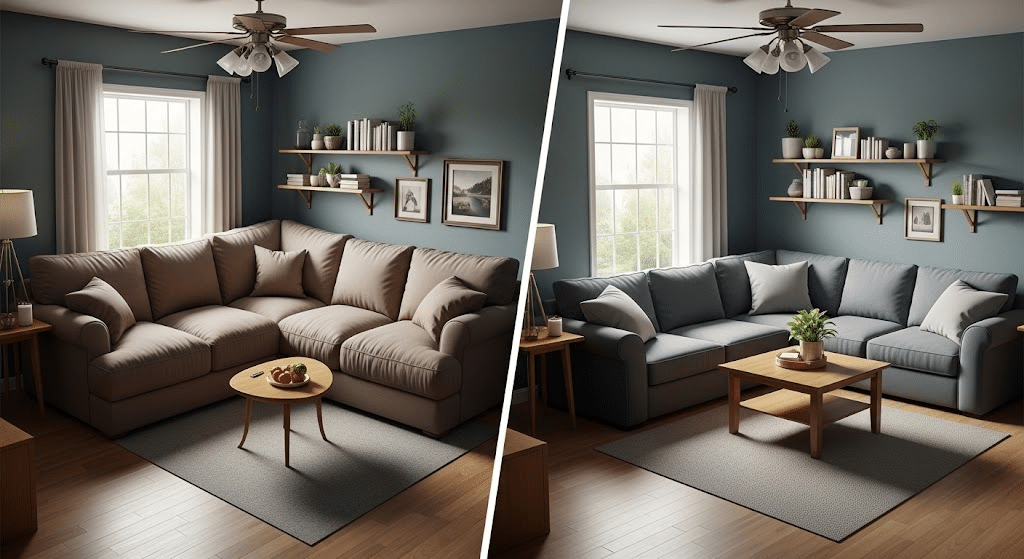
- Why avoid it: Furniture or decor that is too large or too small for a space can make a room feel awkward. Oversized furniture can overpower a small room, while tiny items in a large room might get lost.
- Alternatives: Select furniture and decor that complement the room’s size, ensuring everything is well-proportioned. A good rule of thumb is to have furniture fill about 60-70% of the room’s space.
- Tips: When in doubt, scale back. Larger pieces should be complemented with smaller items to create a harmonious environment. Try placing your furniture in different layouts to find the best balance.
12. Overloading on Mirrors
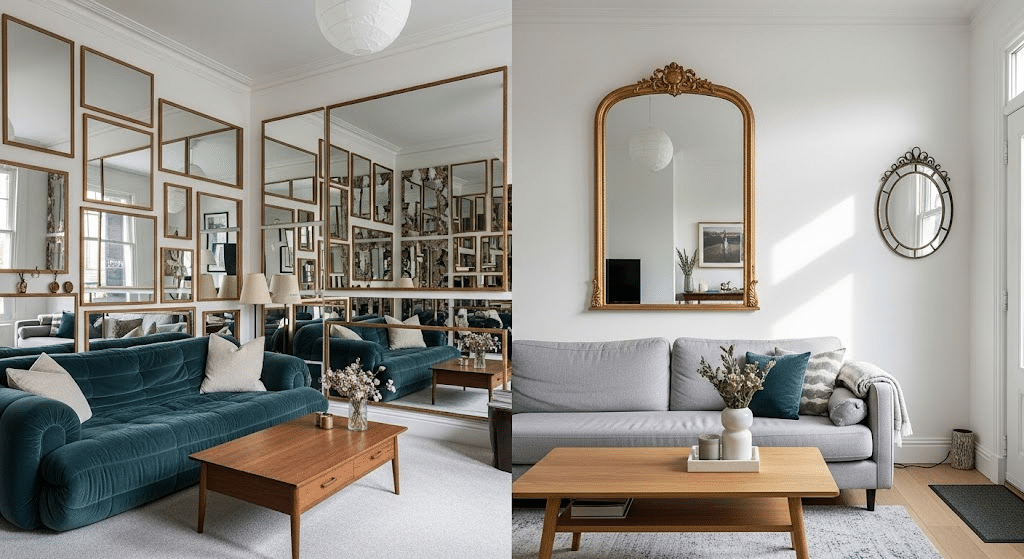
- Why avoid it: Excessive mirrors can create a disorienting effect and may not suit every style or room. Too many reflective surfaces can make a space feel cluttered or visually jarring.
- Alternatives: Use mirrors sparingly, in areas such as entryways or behind lighting fixtures, to create reflective light. A single large mirror can have a more powerful impact than several smaller ones.
- Tips: Choose mirrors with unique frames or in strategic locations to maximize light without overwhelming the space. Opt for mirrors that improve the room’s appeal, not just its functionality.
13. Opting for Excessive Minimalism
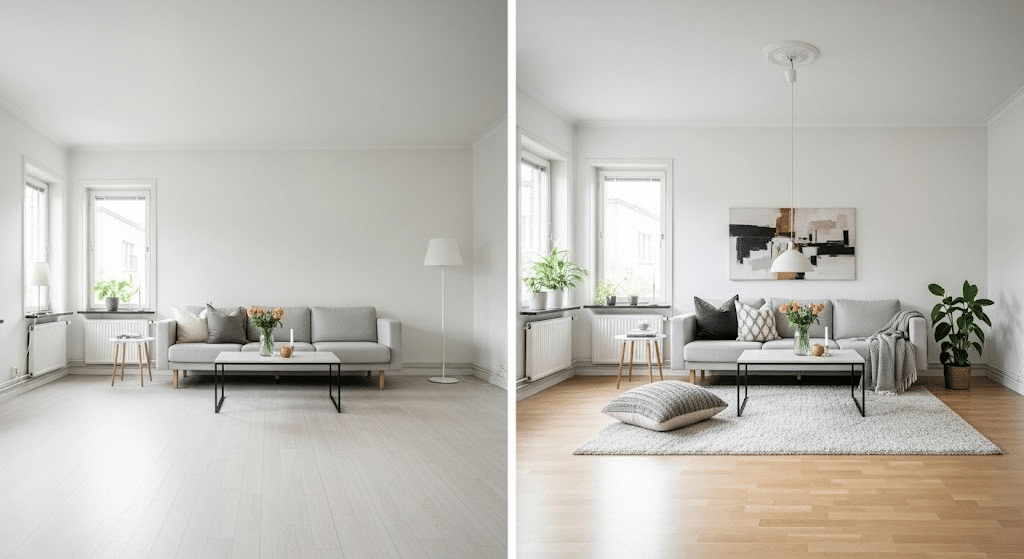
- Why avoid it: A space that’s too stark and sparse can feel uncomfortable or uninspiring. Minimalism should never be about stripping everything away to the point of emptiness.
- Alternatives: Incorporate warmth and texture into minimalist designs with soft fabrics, rugs, and plants. A minimalist space can still feel cozy with the right accessories.
- Tips: Strive for balance by introducing some personal touches, such as artwork or cozy furniture, to create a welcoming atmosphere. Layering different textures will add depth without compromising the minimalist style.
14. Choosing the Wrong Flooring
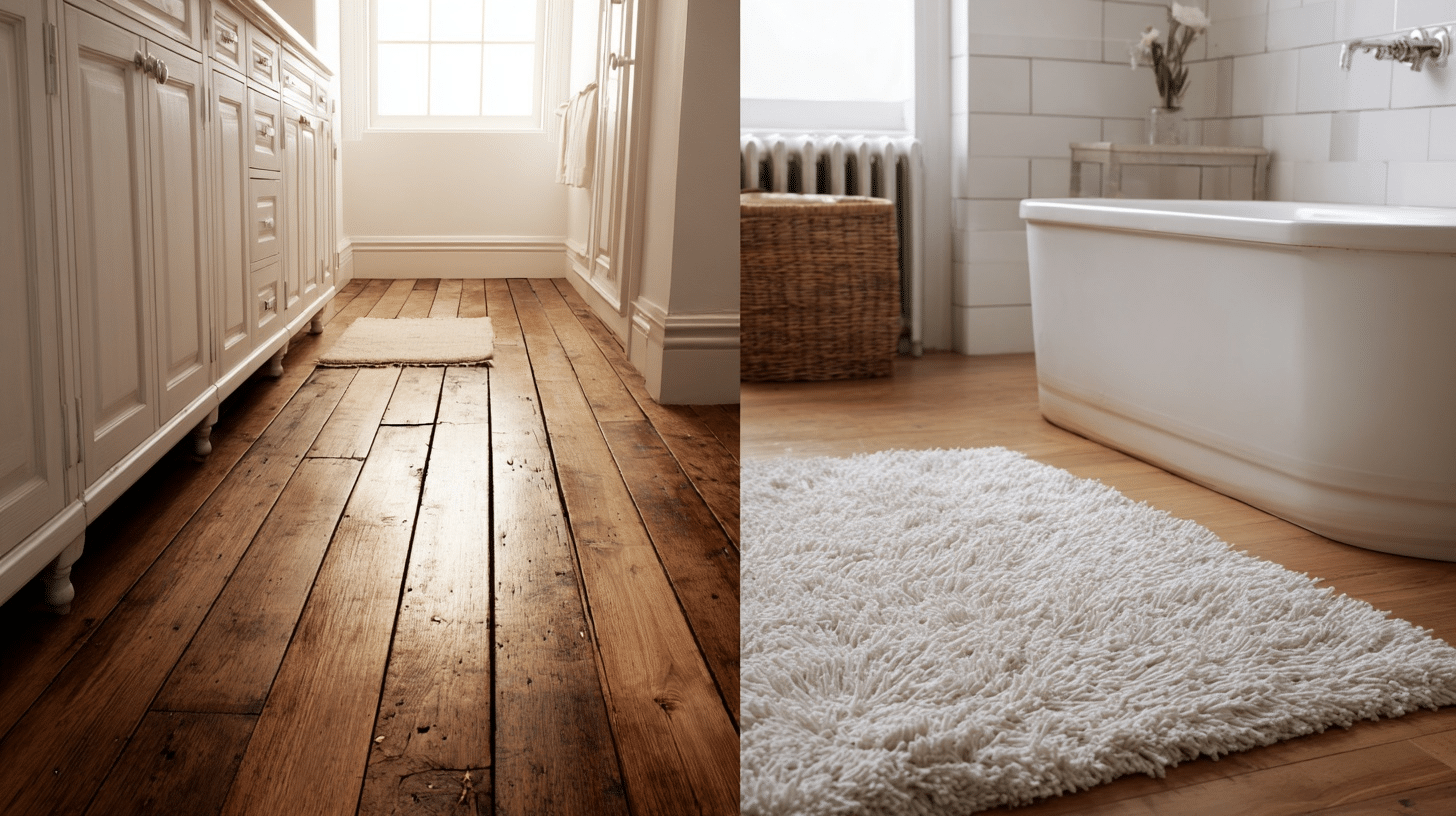
- Why avoid it: Some flooring options may not be practical for every room. For example, hardwood in high-moisture areas, such as bathrooms, can warp over time, while carpet may not be ideal for high-traffic spaces.
- Alternatives: Consider practical flooring options that suit your lifestyle, such as tile for bathrooms or carpet for bedrooms. Engineered wood or luxury vinyl plank flooring can offer the look of wood with more durability.
- Tips: Pay attention to durability, maintenance, and suitability for each room’s function before making a decision. Select flooring that can withstand wear and tear and complements your home’s overall design.
15. Too Much Matching Furniture
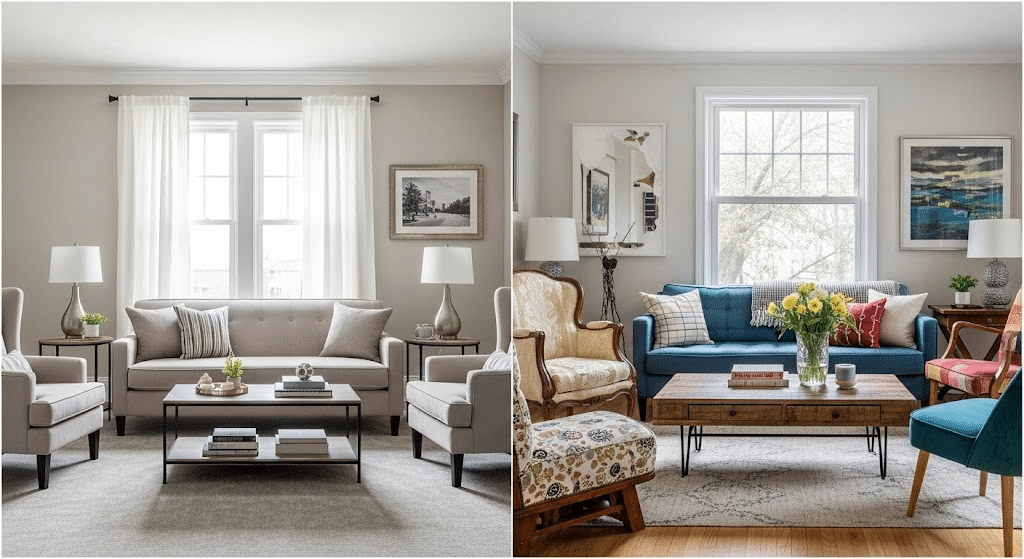
- Why avoid it: Overmatching furniture creates a sense of rigidity, making the room look impersonal and lackluster. It’s important to introduce variety to keep the space feeling dynamic and lived-in.
- Alternatives: Mix and match furniture styles and materials to create a contrasting, eclectic feel. Consider combining vintage and modern elements to add character and interest.
- Tips: Combine complementary pieces in different textures or colors to create a personalized, balanced look. Play with contrasting shapes, sizes, and materials to keep the room visually engaging.
16. Skimping on Storage Solutions
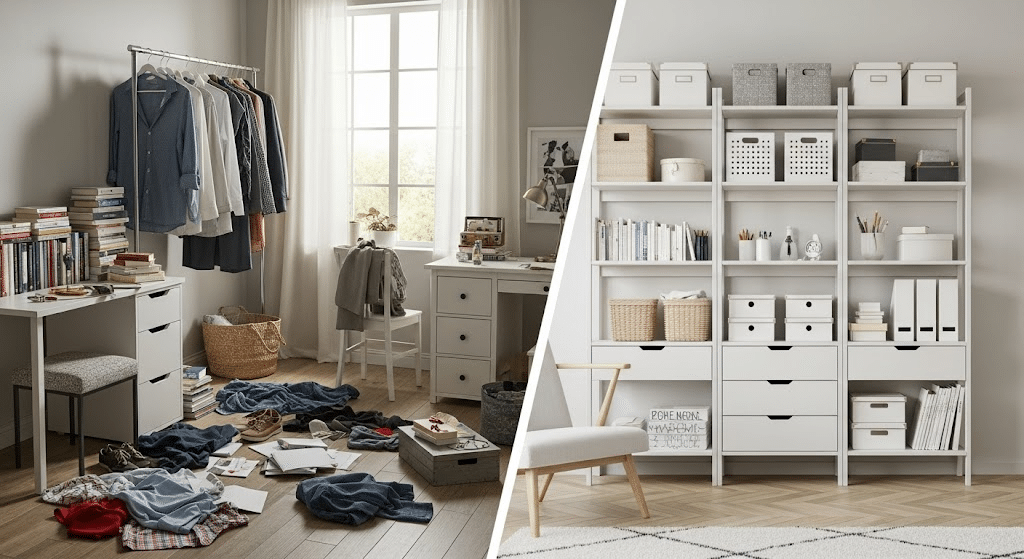
- Why avoid it: Insufficient storage can lead to clutter and disorganization, diminishing the room’s appeal. A messy, cluttered room can be overwhelming and reduce the overall enjoyment of your space.
- Alternatives: Consider investing in creative storage options, such as hidden cabinets, multifunctional furniture, or built-in shelving. Consider furniture that doubles as storage, such as ottomans or coffee tables with secret compartments.
- Tips: Always prioritize storage in your design plans, ensuring that items are easily stored and accessible. Consider the organization and how your space will function on a day-to-day basis before finalizing your design.
17. Neglecting the Exterior Design
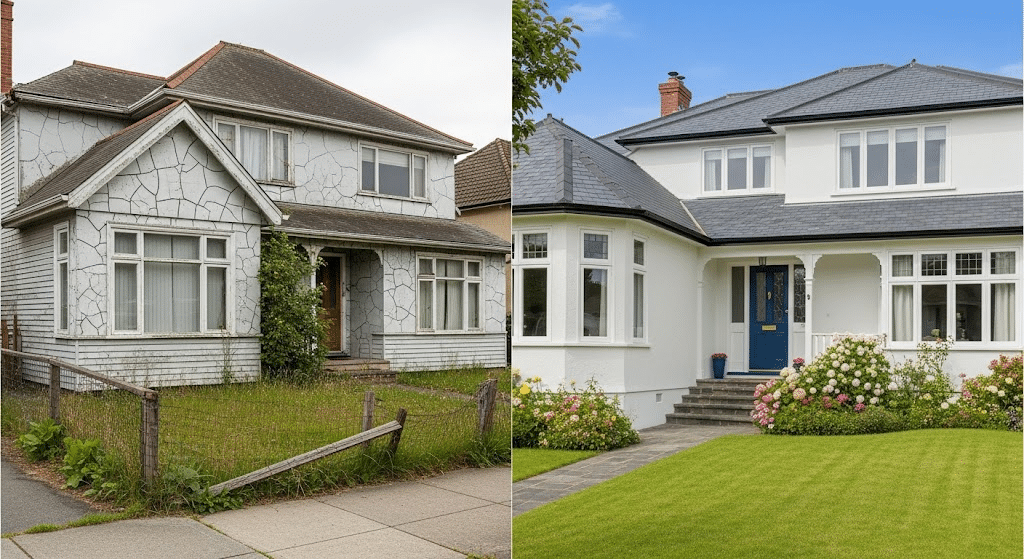
- Why avoid it: A well-maintained exterior improves curb appeal and provides a cohesive design for your entire property. It sets the tone for what visitors can expect inside your home and adds value to your property.
- Alternatives: Start with simple outdoor upgrades, like landscaping or painting the front door, to improve the overall appearance. Install new lighting or update your porch furniture to give the exterior a fresh look.
- Tips: Make sure the exterior design complements the interior style for a seamless transition from outside to inside. Investing in your home’s curb appeal can have lasting benefits.
Things to Keep in Mind While Making Design Centre Upgrades
It’s good to have the following things in mind while putting your knowledge to use on which design center upgrades to avoid.
- Budget realistically from the start: Design center visits can be overwhelming, and it’s easy to get caught up in the excitement. Set a firm budget before you go and stick to it.
- Consider your actual lifestyle, not the idealized model home lifestyle: Those gorgeous model homes are designed to look perfect, not to be lived in. Consider how you cook, entertain, and spend time at home when making decisions.
- Everything can be changed later except structural elements: Focus your budget on items such as electrical placement, plumbing locations, and HVAC upgrades that are expensive or difficult to change later.
- Get everything in writing and ask for product specifications: Don’t just rely on what the sales rep tells you. Get model numbers, brand names, and exact specifications so you can research and comparison shop.
- Don’t feel pressured to make a decision immediately: Good builders will give you time to think about major upgrades. If they’re pushing you to make a decision on the spot, that’s a red flag.
What is Worth Investing in 2025?
While I’m telling you what design center upgrades to avoid, some make sense and can save you money or hassle in the long run.
Structural and Electrical Rough-In Work
Invest in structural and electrical rough-ins during construction, as these are expensive to fix later.
Adding extra circuits, pre-wiring for home automation, or upgrading your electrical panel is now more cost-effective than ever. For example, I spent $800 to pre-wire for surround sound, which would’ve cost $3,000 later.
Plumbing Rough-In Upgrades
Plumbing upgrades are also best done during construction to avoid costly changes later. Adding gas lines for future appliances or roughing in plumbing for a bathroom saves money in the long run.
I spent $200 to add a gas line to my deck, which would’ve cost $1,500 post-construction.
Insulation and Energy Efficiency Upgrades
Upgrading insulation and energy efficiency during construction saves money on monthly bills. Better insulation, energy-efficient windows, and upgraded HVAC systems pay for themselves over time.
I spent $1,200 on upgraded insulation, which has reduced my monthly energy bills by $50.
Flooring Upgrades in High-Traffic Areas
Flooring upgrades in high-traffic areas can be worthwhile investments if the cost difference isn’t substantial.
Consider upgrading to hard flooring or tile in areas such as stairs or mudrooms, where carpeting may not be practical.
To Conclude
I know it’s tempting to want everything perfect from day one but resist that urge. Your new home will evolve with you, and you’ll understand what you need versus what looks good in a showroom.
The design center experience is designed to get you excited and spending money. Focus your budget on the structural and mechanical elements that are expensive to change later.
Take your time, do your research, and don’t let anyone pressure you into making expensive decisions hastily.
Your future self will thank you for knowing these design center upgrades to avoid when you’re not still paying for upgrades you end up changing anyway.
Trust me, I’ve been there, and the regret is real.


